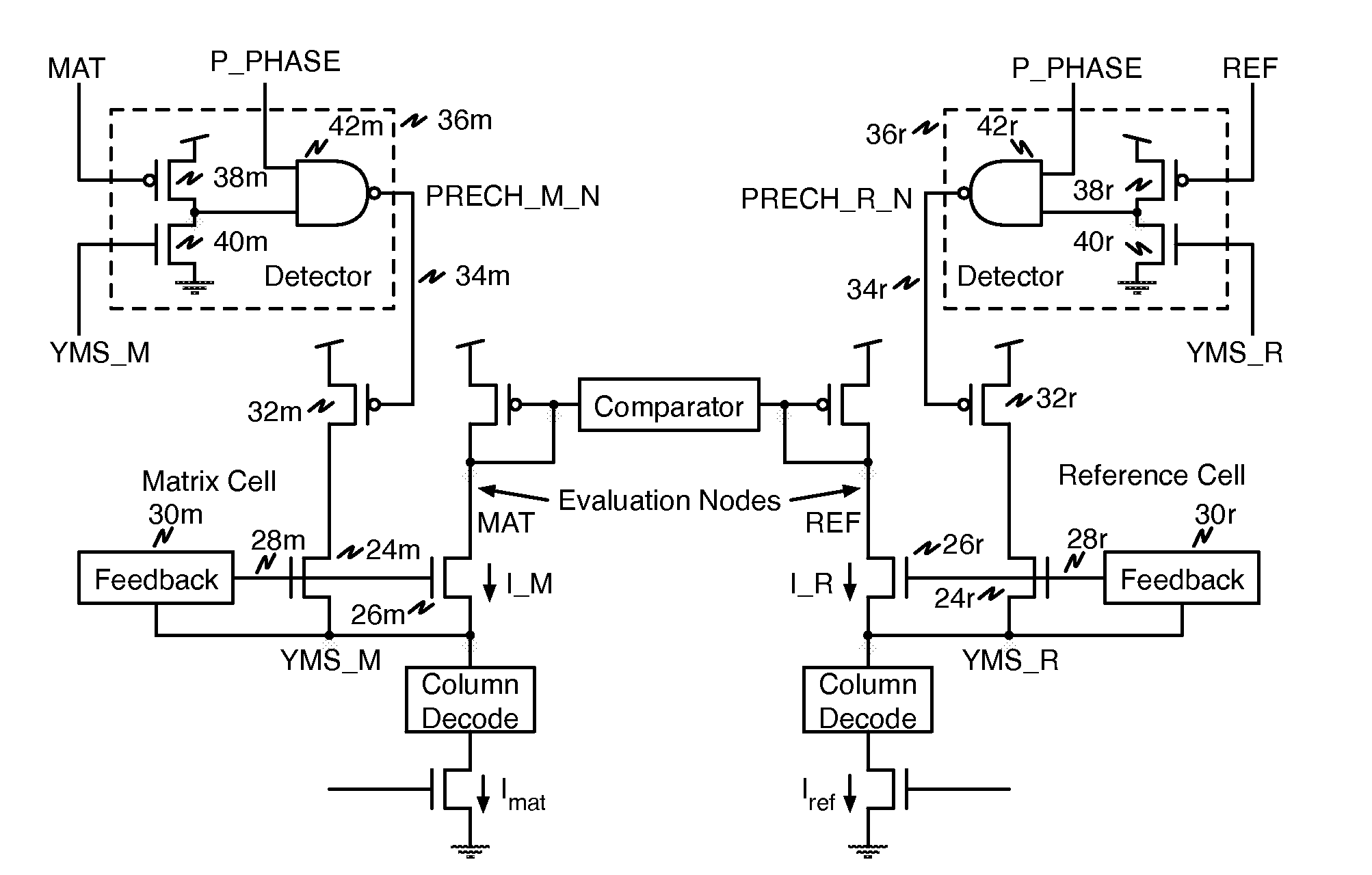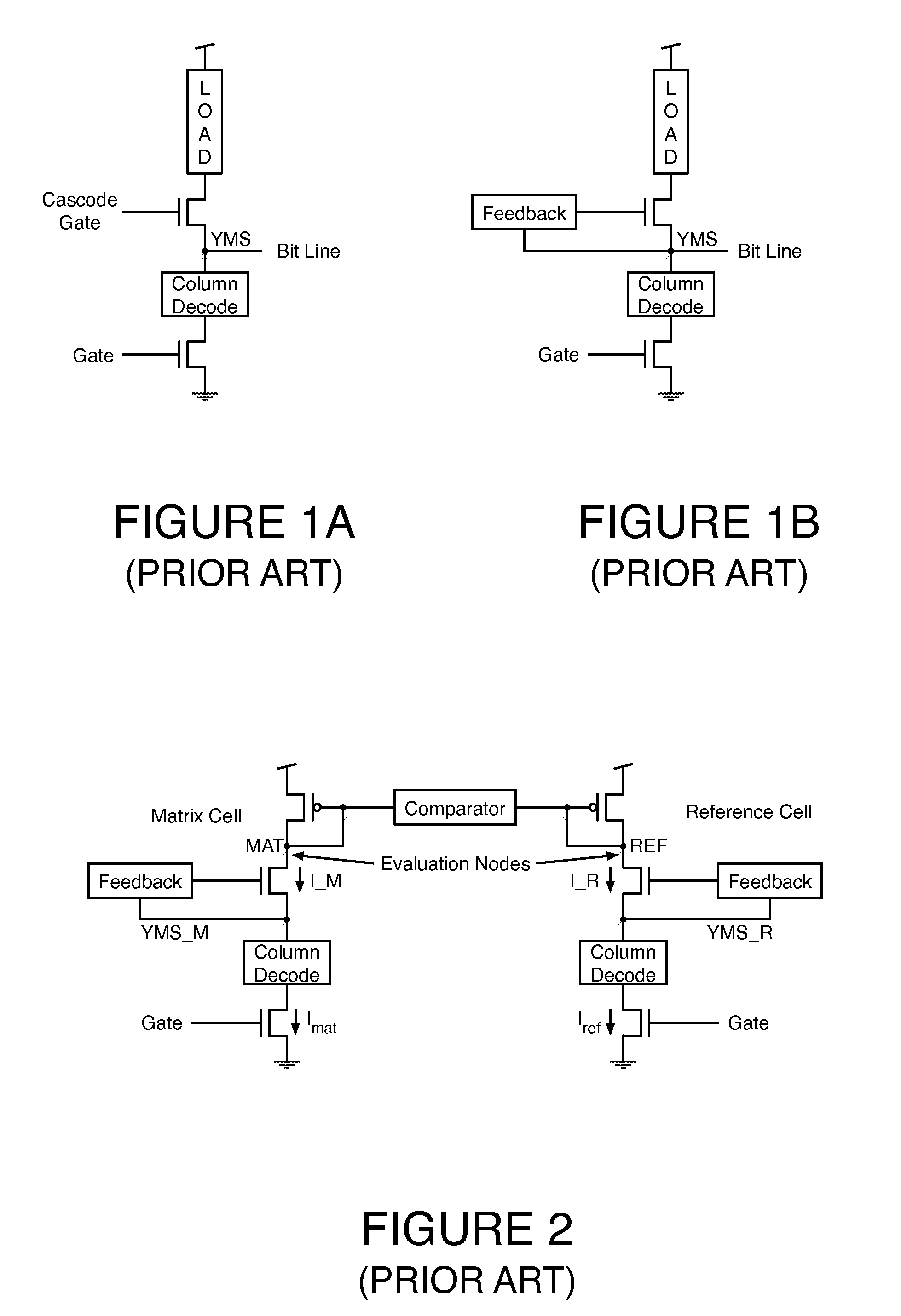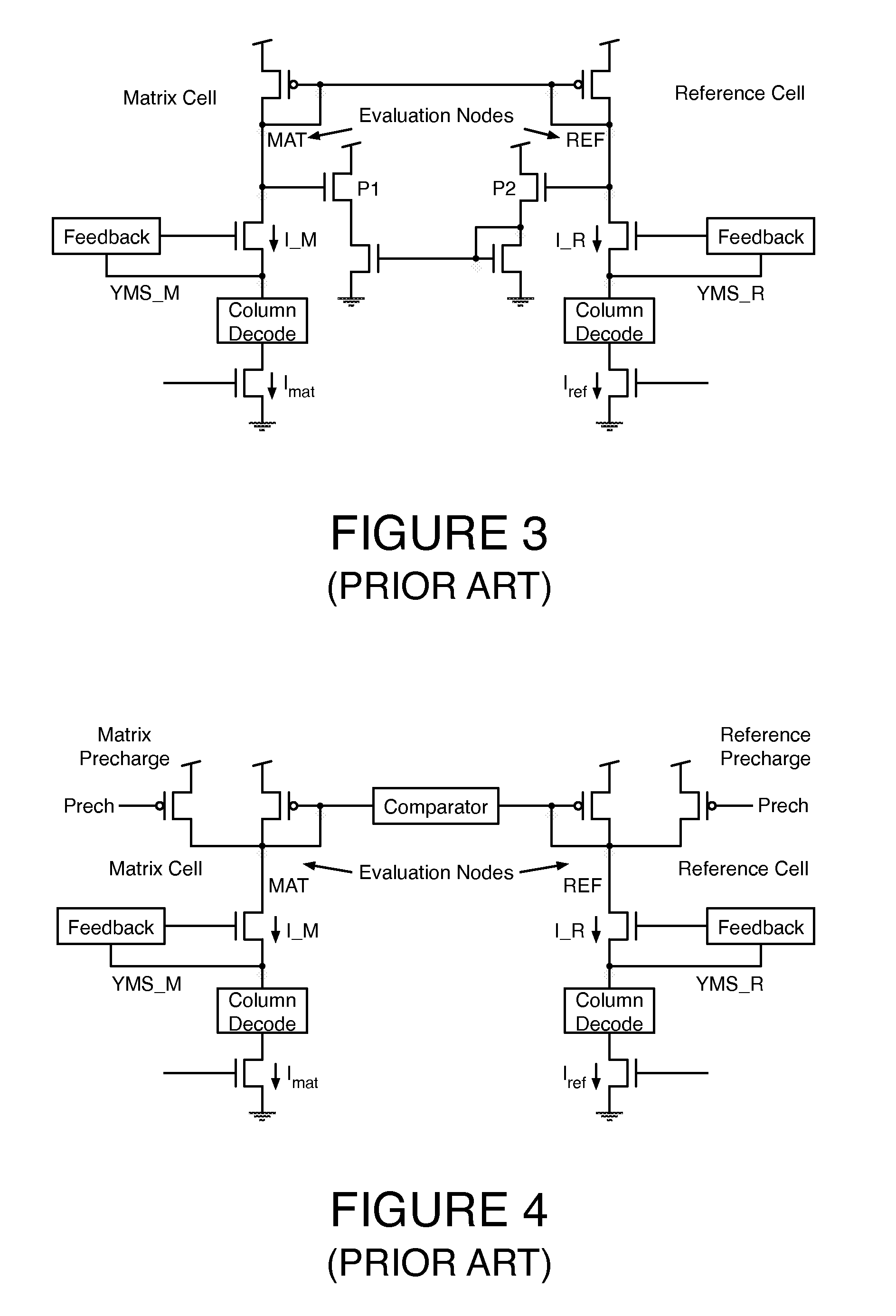Precharge and evaluation phase circuits for sense amplifiers
a technology of phase circuit and amplifier, which is applied in the direction of digital storage, static storage, instruments, etc., can solve the problems of inverter but being usually more complex, the evaluation node is very slow during evaluation, and the sense operation could fail, so as to reduce the die area of sense circuit, optimize the characteristics of each circuit, and increase read performance
- Summary
- Abstract
- Description
- Claims
- Application Information
AI Technical Summary
Benefits of technology
Problems solved by technology
Method used
Image
Examples
Embodiment Construction
[0048]Persons of ordinary skill in the art will realize that the following description of the present invention is illustrative only and not in any way limiting. Other embodiments of the invention will readily suggest themselves to such skilled persons.
[0049]The overall goal is to increase speed / performance and to significantly reduce the die area of the sense amplifier while being careful to avoid over biasing the evaluation nodes (MAT, REF) and the cascode feedback inputs YMS_M, YMS_R and being able to get them very close to their correct values at the end of precharge phase. A sense amplifier according to the present invention includes minimized / optimized precharge circuitry that is able to quickly precharge the bitlines with minimized / optimized precharge circuitry, must minimize / optimize the evaluation p-channel transistors, must minimize / optimize the comparator transistors of both polarities, and also minimizes / optimizes cascode transistors. An important target is to obtain the...
PUM
 Login to View More
Login to View More Abstract
Description
Claims
Application Information
 Login to View More
Login to View More - R&D
- Intellectual Property
- Life Sciences
- Materials
- Tech Scout
- Unparalleled Data Quality
- Higher Quality Content
- 60% Fewer Hallucinations
Browse by: Latest US Patents, China's latest patents, Technical Efficacy Thesaurus, Application Domain, Technology Topic, Popular Technical Reports.
© 2025 PatSnap. All rights reserved.Legal|Privacy policy|Modern Slavery Act Transparency Statement|Sitemap|About US| Contact US: help@patsnap.com



